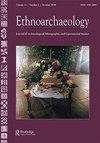No Rain, No Grain? Ethnoarchaeology of Sorghum and Millet Cultivation in Dryland Environments of Sudan, Pakistan, and Ethiopia
IF 1.8
0 ARCHAEOLOGY
引用次数: 5
Abstract
ABSTRACT Drylands cover more than 40% of the earth’s land surface, are found on all continents, and are home to 30% of the world’s population. Due to water scarcity, they are generally considered unsuitable for lasting human settlement. While pastoralism has been reconceptualized recently as a rational, efficient, and sustainable way to live in drylands, agriculture without irrigation is generally considered unfeasible in hyper-arid and arid drylands. This article presents data collected in ethnographic interviews in dryland areas in three countries, Sudan, Pakistan, and Ethiopia, to document and understand the cultivation practices of pearl millet, finger millet, and sorghum in drylands. Contrary to general trends favoring adoption of more water-intensive crops, our results show that farming without irrigation represents a viable strategy even where rainfall is considered insufficient. We argue that it is important to recognize the sustainability and value of dryland agricultural systems, past, present, and future.不下雨就没有粮食?苏丹、巴基斯坦和埃塞俄比亚旱地地区高粱和谷子种植的民族考古学
旱地占地球陆地面积的40%以上,分布在各大洲,是世界30%人口的家园。由于缺水,它们通常被认为不适合人类长期居住。虽然畜牧业最近被重新定义为在干旱地区合理、高效和可持续的生活方式,但在极度干旱和干旱的旱地,没有灌溉的农业通常被认为是不可行的。本文介绍了在苏丹、巴基斯坦和埃塞俄比亚三个国家旱地地区进行的民族志访谈中收集的数据,以记录和了解旱地珍珠粟、手指粟和高粱的种植方式。与倾向于采用更耗水的作物的一般趋势相反,我们的研究结果表明,即使在降雨量不足的地方,不灌溉的农业也是一种可行的策略。我们认为,认识到过去、现在和未来旱地农业系统的可持续性和价值非常重要。
本文章由计算机程序翻译,如有差异,请以英文原文为准。
求助全文
约1分钟内获得全文
求助全文
来源期刊

Ethnoarchaeology
ARCHAEOLOGY-
CiteScore
1.60
自引率
0.00%
发文量
10
期刊介绍:
Ethnoarchaeology, a cross-cultural peer-reviewed journal, focuses on the present position, impact of, and future prospects of ethnoarchaeological and experimental studies approaches to anthropological research. The primary goal of this journal is to provide practitioners with an intellectual platform to showcase and appraise current research and theoretical and methodological directions for the 21st century. Although there has been an exponential increase in ethnoarchaeological and experimental research in the past thirty years, there is little that unifies or defines our subdiscipline. Ethnoarchaeology addresses this need, exploring what distinguishes ethnoarchaeological and experimental approaches, what methods connect practitioners, and what unique suite of research attributes we contribute to the better understanding of the human condition. In addition to research articles, the journal publishes book and other media reviews, periodic theme issues, and position statements by noted scholars.
 求助内容:
求助内容: 应助结果提醒方式:
应助结果提醒方式:


